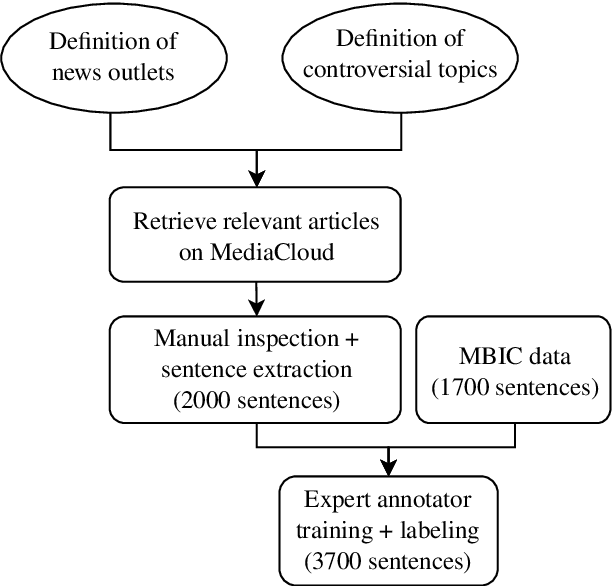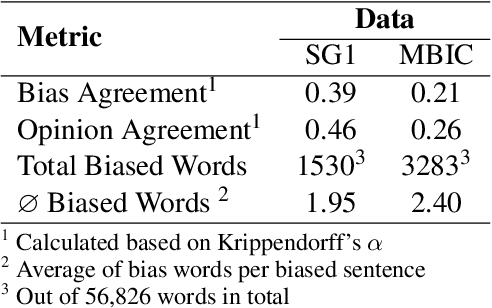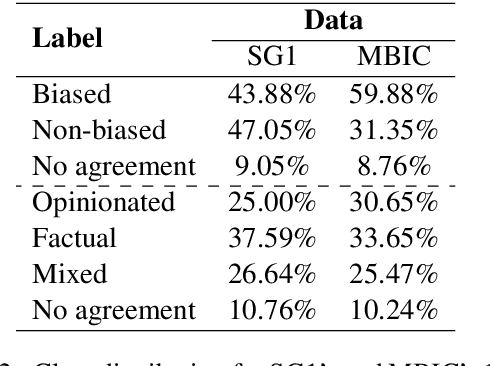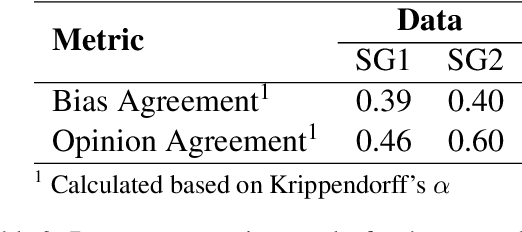Manuel Plank
Neural Media Bias Detection Using Distant Supervision With BABE -- Bias Annotations By Experts
Sep 29, 2022



Abstract:Media coverage has a substantial effect on the public perception of events. Nevertheless, media outlets are often biased. One way to bias news articles is by altering the word choice. The automatic identification of bias by word choice is challenging, primarily due to the lack of a gold standard data set and high context dependencies. This paper presents BABE, a robust and diverse data set created by trained experts, for media bias research. We also analyze why expert labeling is essential within this domain. Our data set offers better annotation quality and higher inter-annotator agreement than existing work. It consists of 3,700 sentences balanced among topics and outlets, containing media bias labels on the word and sentence level. Based on our data, we also introduce a way to detect bias-inducing sentences in news articles automatically. Our best performing BERT-based model is pre-trained on a larger corpus consisting of distant labels. Fine-tuning and evaluating the model on our proposed supervised data set, we achieve a macro F1-score of 0.804, outperforming existing methods.
* arXiv admin note: substantial text overlap with arXiv:2112.13352
Towards A Reliable Ground-Truth For Biased Language Detection
Dec 17, 2021
Abstract:Reference texts such as encyclopedias and news articles can manifest biased language when objective reporting is substituted by subjective writing. Existing methods to detect bias mostly rely on annotated data to train machine learning models. However, low annotator agreement and comparability is a substantial drawback in available media bias corpora. To evaluate data collection options, we collect and compare labels obtained from two popular crowdsourcing platforms. Our results demonstrate the existing crowdsourcing approaches' lack of data quality, underlining the need for a trained expert framework to gather a more reliable dataset. By creating such a framework and gathering a first dataset, we are able to improve Krippendorff's $\alpha$ = 0.144 (crowdsourcing labels) to $\alpha$ = 0.419 (expert labels). We conclude that detailed annotator training increases data quality, improving the performance of existing bias detection systems. We will continue to extend our dataset in the future.
 Add to Chrome
Add to Chrome Add to Firefox
Add to Firefox Add to Edge
Add to Edge